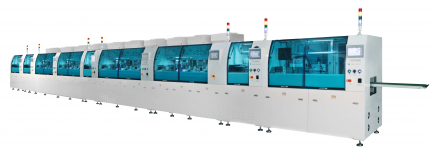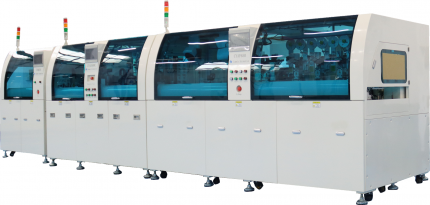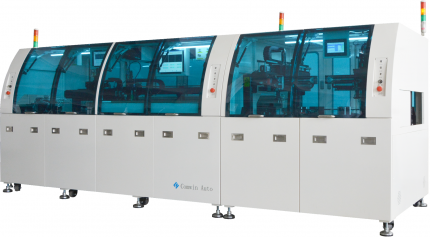Mobile Display Manufacturing
Mobile display manufacturing encompasses various processes, from the initial design and fabrication of display panels to assembly and quality control. The manufacturing process typically involves the following steps:
- Substrate Preparation: The process begins with preparing the substrate, which serves as the base for the display panel. Common substrates include glass and flexible materials like plastic or polymer films.
- Thin-Film Deposition: Thin-film deposition techniques are used to deposit layers of materials onto the substrate to form the different components of the display, such as transistors, electrodes, and pixel elements. Common deposition methods include physical vapor deposition (PVD) and chemical vapor deposition (CVD).
- Photolithography: Photolithography is a key process used to pattern the thin-film layers on the substrate. It involves applying a photoresist material to the substrate, exposing it to light through a mask, and then developing the patterned layers.
- Etching: Etching processes are used to selectively remove unwanted material from the thin-film layers, defining the features and structures of the display components.
- Assembly and Encapsulation: Once the display panel components are fabricated, they are assembled and encapsulated to protect them from environmental factors such as moisture and mechanical stress. This may involve attaching additional layers, such as color filters and polarizers, and sealing the panel with a protective cover.
- Testing and Quality Control: The finished display panels undergo rigorous testing to ensure they meet performance specifications and quality standards. This includes testing for defects, uniformity, brightness, color accuracy, and touch sensitivity.
- Packaging and Shipping: After passing quality control tests, the display panels are packaged and prepared for shipment to device manufacturers for integration into smartphones, tablets, and other electronic devices.
Type of Mobile Display Manufacturing:
- LCD (Liquid Crystal Display): LCDs are among the most common types of displays used in mobile devices. They consist of a backlight source, liquid crystal layer, and color filters. LCDs offer good image quality and are available in various resolutions and sizes.
- OLED (Organic Light-Emitting Diode): OLED displays use organic compounds that emit light when an electric current is applied. They offer advantages such as deeper blacks, higher contrast ratios, and better energy efficiency compared to LCDs. OLED displays are flexible and can be used in curved or foldable devices.
- AMOLED (Active Matrix OLED): AMOLED displays feature an active matrix backplane that controls individual pixels, resulting in faster response times and improved image quality compared to passive matrix OLEDs. They are widely used in high-end smartphones and offer vibrant colors and deep blacks.
- IPS (In-Plane Switching): IPS displays are a type of LCD known for their wide viewing angles and accurate color reproduction. They offer excellent visibility even at extreme angles, making them suitable for mobile devices where users may view the screen from different positions.
- TFT-LCD (Thin-Film Transistor LCD): TFT-LCDs use thin-film transistor technology to improve image quality, response times, and energy efficiency compared to traditional LCDs. They are commonly used in smartphones and tablets, offering high resolutions and vibrant colors.
- Flexible Displays: Flexible displays use bendable or foldable materials that allow for innovative form factors and designs. These displays are commonly used in foldable smartphones, smartwatches, and other wearable devices, offering enhanced durability and versatility.
- E-Ink Displays: E-Ink displays, also known as electronic paper displays, use electrophoretic technology to produce monochrome images that mimic the appearance of ink on paper. They are commonly used in e-readers and offer benefits such as low power consumption and sunlight readability.
- Mini-LED and Micro-LED Displays: Mini-LED and micro-LED displays are advanced backlighting technologies that offer improved brightness, contrast, and energy efficiency compared to traditional LCDs. They are used in high-end smartphones and tablets, offering enhanced HDR performance and color accuracy.





